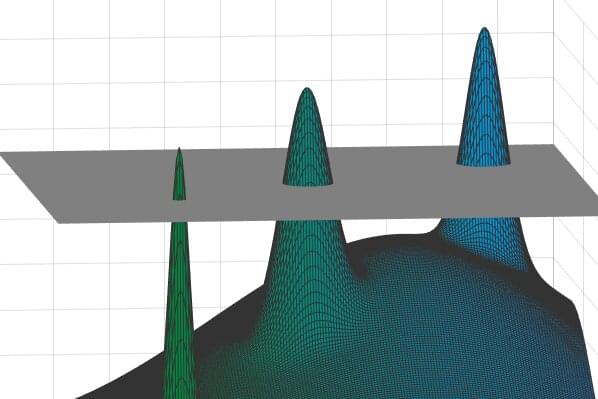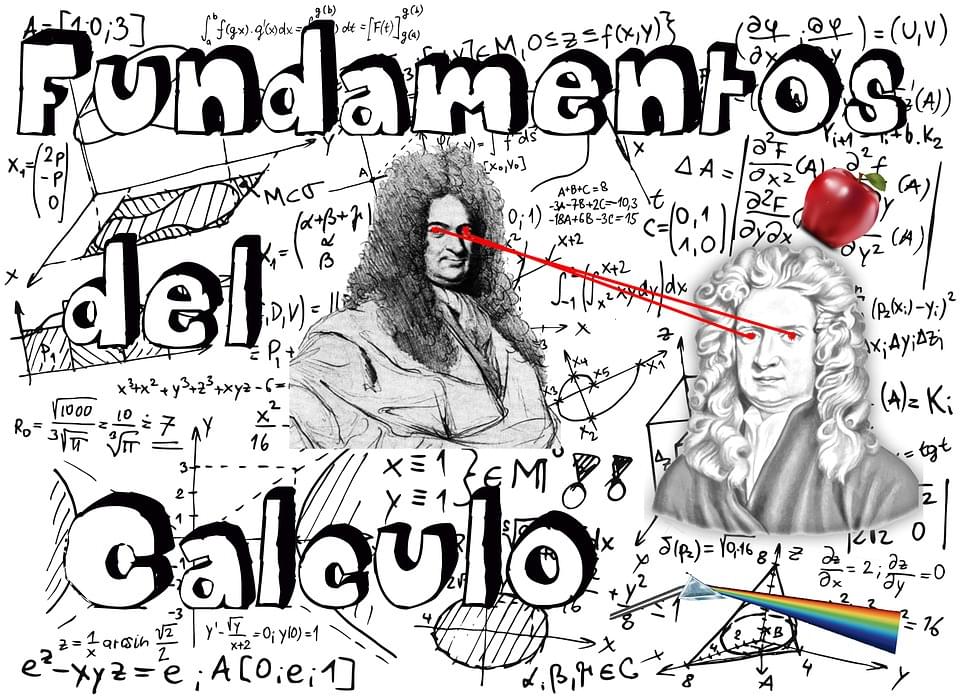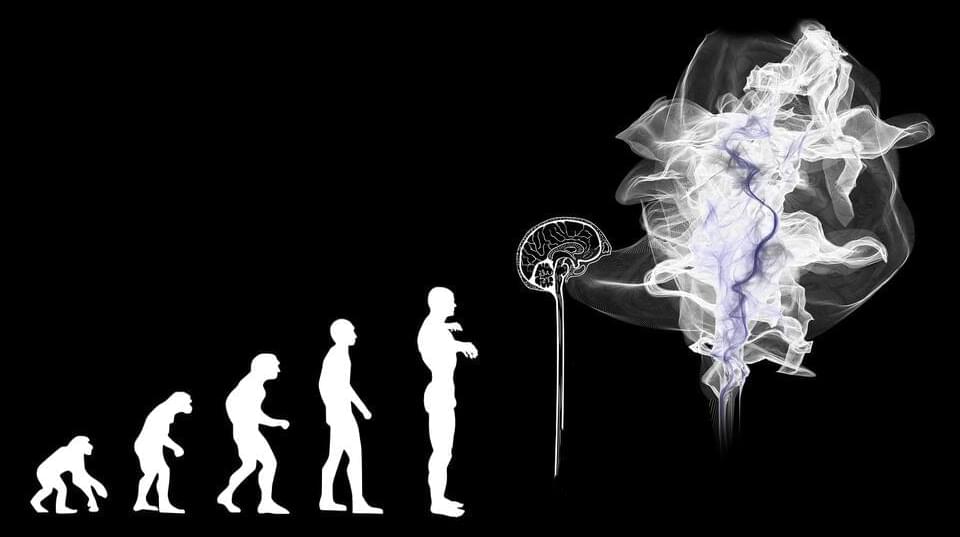Paul Nelson has solved the subconvexity problem, bringing mathematicians one step closer to understanding the Riemann hypothesis and the distribution of prime numbers.


Paul Nelson has solved the subconvexity problem, bringing mathematicians one step closer to understanding the Riemann hypothesis and the distribution of prime numbers.

The notion that some computational problems in math and computer science can be hard should come as no surprise. There is, in fact, an entire class of problems deemed impossible to solve algorithmically. Just below this class lie slightly “easier” problems that are less well-understood—and may be impossible, too.
David Gamarnik, professor of operations research at the MIT Sloan School of Management and the Institute for Data, Systems, and Society, is focusing his attention on the latter, less-studied category of problems, which are more relevant to the everyday world because they involve randomness —an integral feature of natural systems. He and his colleagues have developed a potent tool for analyzing these problems called the overlap gap property (or OGP). Gamarnik described the new methodology in a recent paper in the Proceedings of the National Academy of Sciences.


From the cosmic microwave background to Feynman diagrams — what are the underlying rules that work to create patterns of action, force and consequence that make up our universe?
Brian’s new book “Ten Patterns That Explain the Universe” is available now: https://geni.us/clegg.
Watch the Q&A: https://youtu.be/RZB95znAGRE
Brian Clegg will explore the phenomena that make up the very fabric of our world by examining ten essential sequenced systems. From diagrams that show the deep relationships between space and time to the quantum behaviours that rule the way that matter and light interact, Brian will show how these patterns provide a unique view of the physical world and its fundamental workings.
Brian Clegg was born in Rochdale, Lancashire, UK, and attended the Manchester Grammar School, then read Natural Sciences (specialising in experimental physics) at Cambridge University. After graduating, he spent a year at Lancaster University where he gained a second MA in Operational Research, a discipline developed during the Second World War to apply mathematics and probability to warfare and since widely applied to business problem solving. Brian now concentrates on writing popular science books, with topics ranging from infinity to ‘how to build a time machine.’ He has also written regular columns, features and reviews for numerous magazines and newspapers, including Nature, BBC Focus, BBC History, Good Housekeeping, The Times, The Observer, Playboy, The Wall Street Journal and Physics World.
This talk was recorded on 28 September 2021.
–
A very special thank you to our Patreon supporters who help make these videos happen, especially:
Supalak Foong, efkinel lo, Abdelkhalek Ayad, Martin Paull, Ben Wynne-Simmons, Ivo Danihelka, Hamza, Paulina Barren, Kevin Winoto, Jonathan Killin, János Fekete, Mehdi Razavi, Mark Barden, Taylor Hornby, Rasiel Suarez, Stephan Giersche, William ‘Billy’ Robillard, Scott Edwardsen, Jeffrey Schweitzer, Gou Ranon, Christina Baum, Frances Dunne, jonas.app, Tim Karr, Adam Leos, Michelle J. Zamarron, Fairleigh McGill, Alan Latteri, David Crowner, Matt Townsend, Anonymous, Robert Reinecke, Paul Brown, Lasse T. Stendan, David Schick, Joe Godenzi, Dave Ostler, Osian Gwyn Williams, David Lindo, Roger Baker, Greg Nagel, and Rebecca Pan.
–
Subscribe for regular science videos: http://bit.ly/RiSubscRibe.
The Ri is on Patreon: https://www.patreon.com/TheRoyalInstitution.
and Twitter: http://twitter.com/ri_science.
and Facebook: http://www.facebook.com/royalinstitution.
and Tumblr: http://ri-science.tumblr.com/
Our editorial policy: http://www.rigb.org/home/editorial-policy.
Subscribe for the latest science videos: http://bit.ly/RiNewsletter.

Many of these systems are kept out of equilibrium because individual constituents have their own power source — ATP for cells, gas for cars. But all these extra energy sources and mismatched reactions make for a complex dynamical system beyond the reach of statistical mechanics. How can we analyze phases in such ever-changing systems?
Vitelli and his colleagues see an answer in mathematical objects called exceptional points. Generally, an exceptional point in a system is a singularity, a spot where two or more characteristic properties become indistinguishable and mathematically collapse into one. At an exceptional point, the mathematical behavior of a system differs dramatically from its behavior at nearby points, and exceptional points often describe curious phenomena in systems — like lasers — in which energy is gained and lost continuously.
Now the team has found that these exceptional points also control phase transitions in nonreciprocal systems. Exceptional points aren’t new; physicists and mathematicians have studied them for decades in a variety of settings. But they’ve never been associated so generally with this type of phase transition. “That’s what no one has thought about before, using these in the context of nonequilibrium systems,” said the physicist Cynthia Reichhardt of Los Alamos National Laboratory in New Mexico. “So you can bring all the machinery that we already have about exceptional points to study these systems.”



AutoML-Zero is unique because it uses simple mathematical concepts to generate algorithms “from scratch,” as the paper states. Then, it selects the best ones, and mutates them through a process that’s similar to Darwinian evolution.
AutoML-Zero first randomly generates 100 candidate algorithms, each of which then performs a task, like recognizing an image. The performance of these algorithms is compared to hand-designed algorithms.-Zero then selects the top-performing algorithm to be the “parent.”
“This parent is then copied and mutated to produce a child algorithm that is added to the population, while the oldest algorithm in the population is removed,” the paper states.

The idea of a tritium power cell is pretty straightforward: stick enough of the tiny glowing tubes to a photovoltaic panel and your DIY “nuclear battery” will generate energy for the next decade or so. Only problem is that the power produced, measured in a few microwatts, isn’t enough to do much with. But as [Ian Charnas] demonstrates in his latest video, you can eke some real-world use out of such a cell by storing up its power over a long enough period.
As with previous projects we’ve seen, [Ian] builds his cell by sandwiching an array of keychain-sized tritium tubes between two solar panels. Isolated from any outside light, power produced by the panels is the result of the weak green glow given off by the tube’s phosphorus coating as it gets bombarded with electrons. The panels are then used to charge a bank of thin-film solid state batteries, which are notable for their exceptionally low self-discharge rate.
Some quick math told [Ian] that a week of charging should build up enough of a charge to power a knock-off handheld Tetris game for about 10 minutes. Unfortunately, after waiting the prescribed amount of time, he got only a few seconds of runtime out of his hacked together power source.
“PARADOX LOST: The Public Edition, by Marshall Barnes,” Oct 6, 2014.
This book is by internationally noted research and development engineer, Marshall Barnes, and is based on his special report for select members of the United States Congress on the coming reality of time travel, which is now here on the particle level. The only authoritative book on the subject of time travel, it scientifically answers all the issues around the topic, proves why paradoxes are impossible and why the world’s physicists have been so wrong about time travel for so long. Includes definitive analysis of errors by Stephen Hawking, Kip Thorne, Paul Davies, Tim Maudlin, among others. Answers Kurt Godel’s famous question of how can a past that hasn’t passed yet, be the past, and many other issues left unanswered by all other sources.
Among outstanding features, it details Marshall’s creation of the Verdrehung Fan™, the first time machine in the world, that is sending signals through traversable micro wormholes, as speculated could be possible in New Scientist magazine, May 20th, 2014. The Einstein related physics from which it works and how Marshall used it to defeat world famous Ronald Mallett in the race to build a time machine, is revealed as well as why Mallett is far less than the media has made him seem.
Easy to read but rich in detail, this book will be a challenge for scientist and non-scientist alike, with preconceived notions about the subject, as all cliches are dismantled and discarded, revealing stunning, hidden truths that are reached without ever taking a step off the path of known physics. This is the book for those wanting definitive answers backed by definitive proofs and calculations, without dealing with the heavy mathematics.